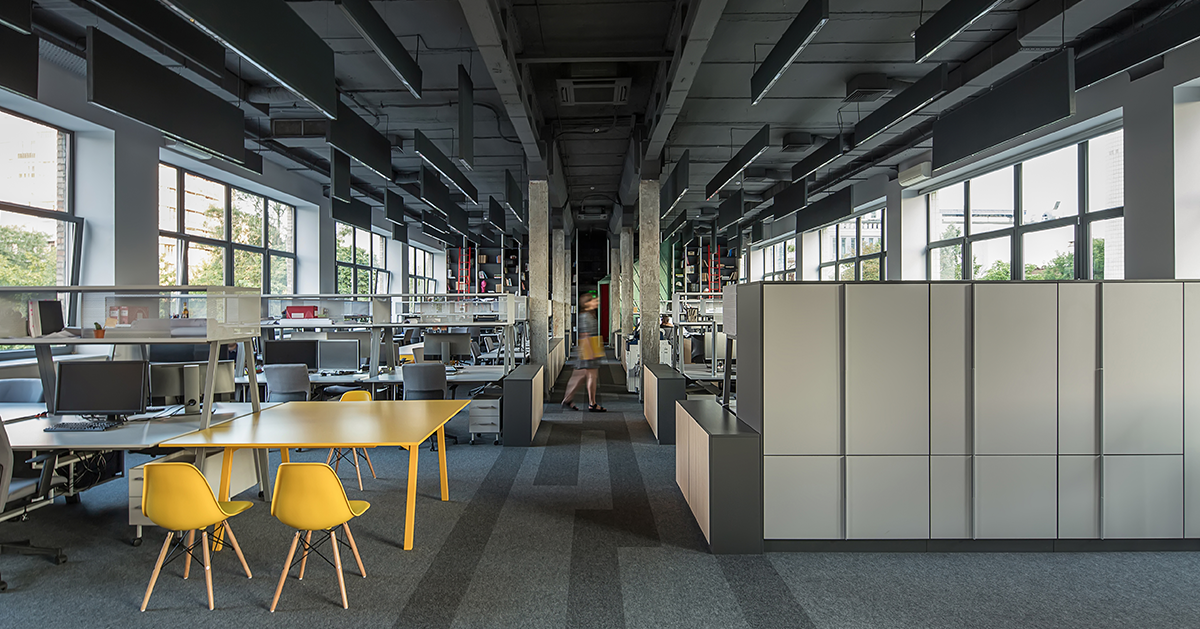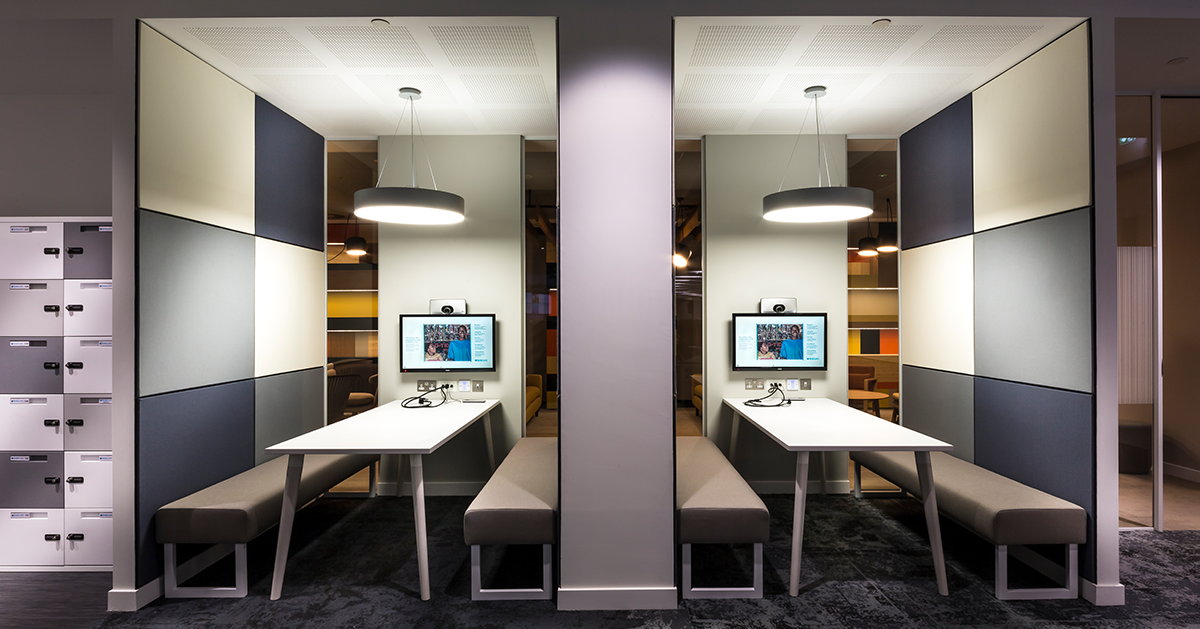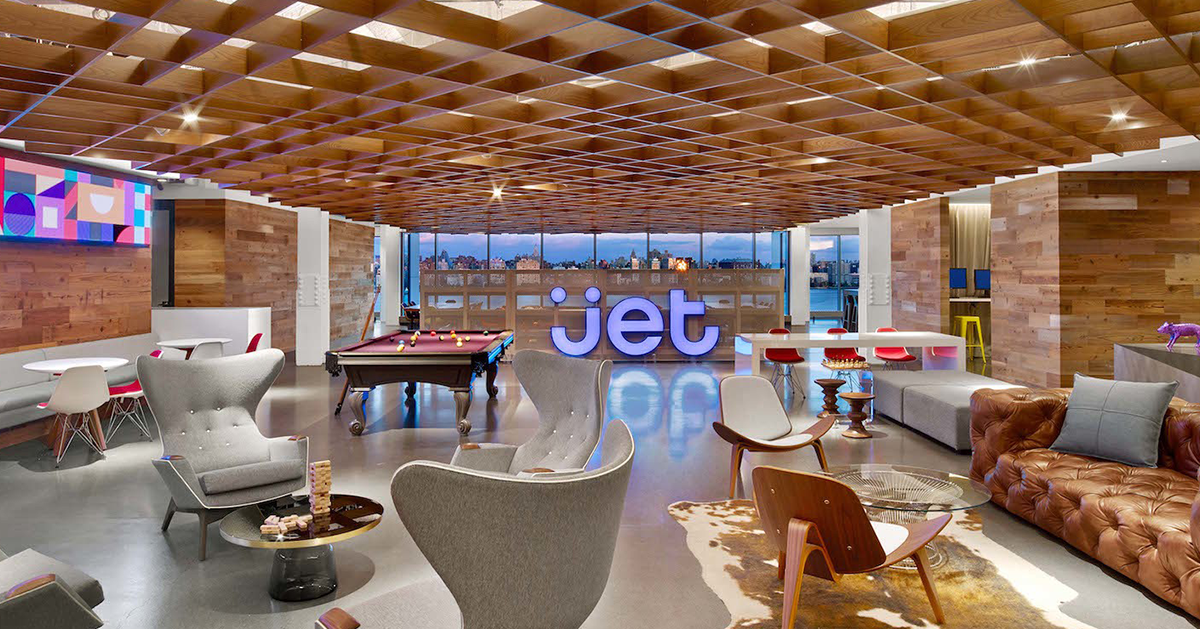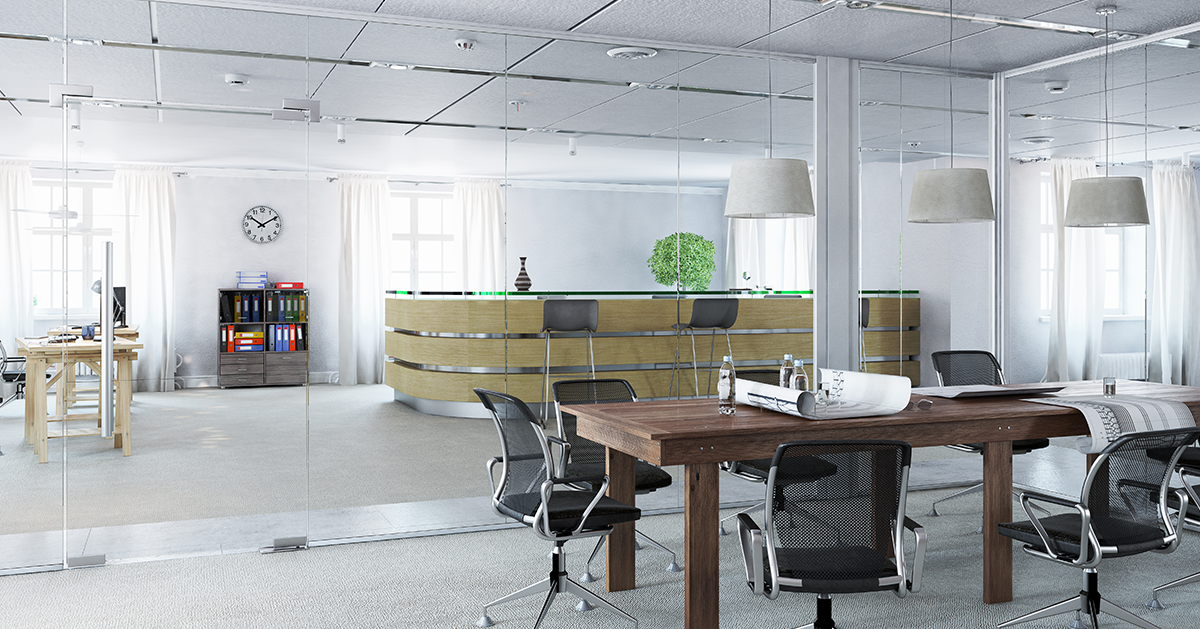
What will Brick-and-Mortar Offices Look Like Post-COVID-19?
With some of the world’s biggest companies – including Amazon, Microsoft, Google and many others – extending work-from-home policies or contemplating a permanent shift to remote work, one key question has been raised regarding the future of the way the world does business.
What will brick-and-mortar office spaces look like as we enter and move through the post-pandemic “new normal?”
With remote work proven not only possible, but productive, will these spaces even exist? Will they need to adapt and reconfigure in major ways to find a new niche in the landscape of the world’s collective workplace?
Let’s explore the future of the modern office.

Will Brick-and-Mortar Collaboration Spaces Make a Comeback?
First off, it’s unlikely that even a heavier shift toward remote work would drive out in-person work and collaboration completely. Organizations and their team members still thrive on in-person communication, and remote work, for the leaps it has taken, still presents unique challenges in terms of connection, engagement and more.
Still, though, physical workspaces will need to evolve.

Prepping for a Modular Office Design Takeover
It’s likely high time to do away with the massive, sprawling corporate workspaces of times gone by – or at least reconfigure them in a major way.
Reversing the modern trend of open, “collaborative” offices, modular workspaces that better promote social distancing measures and more are stepping into the spotlight.
And modular no longer equates to “closed off.”
Instead, modular offices with smaller footprints can allow for a unique and productive blend of remote work and in-person collaboration. When properly equipped, these new, hybrid spaces can serve the interests of those in the office and those on the go, bringing together entire teams seamlessly without sacrificing the flexibility of remote work or the enhanced nature of in-person communication.
These hybrid, modular spaces will also play a key role in luring top talent to enterprises. With so many remote options available – and more likely on the horizon – it’s going to take a special office environment to convince talented employees and leadership to hop on board.

How Technology Is Going to Drive that Revolutionary Shift
So, modular is likely the way of the future. Delivering on all these nebulous office redesign goals and providing a truly innovative space may seem like a challenge but, in reality, audiovisual and technological solutions exist to facilitate this key transition.
In particular, the shift will be driven by:
- Modular Physical Spaces
Though perhaps not traditionally thought of as “technology,” providing physical furniture and office solutions that promote modularity will be key in meeting the demands of post-pandemic brick-and-mortar offices. Movable, writable walls, elevated “cubicles” featuring key integrations with AV and collaboration solutions, fully equipped solo workspaces or booths that allow for communication and productivity with both on-site and remote team members, and more will all be key. - Security, Surveillance and Access Control
It’s no longer enough to simply know who is in the office. You need to know who employees and visitors are, where they’re going, what they’re doing, and everything in between. With effective security, surveillance and access control measures, that’s possible.
Examples include central databases and command centers with oversight over all of a buildings occupants, elevated camera systems, temperature scanning and facial recognition solutions, robust analytical capabilities via dashboards, easy-to-understand alarming and orders of operation to act on those insights, and more.
Elevated camera systems and recognition can also lift other aspects of your operation, such as cleaning and disinfection. With real-time analytics about high-traffic areas, cleaning schedules that best serve those spaces and conserve resources can be implemented. - A New Suite of AV Solutions
The collaborative workspaces of the pre-pandemic era need to be completely overhauled. Instead of outfitting workspaces and meeting rooms with wired unified communication and screen sharing technology and calling it a day, the entirety of these spaces will need to be reconfigured with the new blend of on-site and remote collaboration in mind.
Rooms need to be outfitted with camera systems that capture the entirety of the space for remote participants, and acoustic systems need to project appropriately throughout these meeting places, as well.
Further, multi-use, collaborative and solo spaces need thorough integration with the solutions that remote work have brought to the forefront. Videoconferencing tools need to be made available anywhere on-site, and microphones, monitors, headsets and cameras need to be accessible and functional. - A Larger Role for Information Communication
Prior to the pandemic, it’s unlikely much thought was put into how information was conveyed to the entirety of an organization. Company-wide emails were sent out and read, and that was good enough.
It’s time to elevate how information is disseminated.
Modular office spaces need centralized and available video walls and displays that can not only be used to display critical information about safety, efficiency and more, but can make real-time analytics driving the operation visible to the entirety of an on-site workforce.
All of these technology disciplines have a critical role to play in the new, modular office spaces that are just over the horizon – and you need to ensure you’ve planned out your implementation to be ahead of the curve and save time, money and manpower.

Crafting New, Modular Spaces with Thoughtful and Effective Technology Design
To take advantage of AV solutions aimed at elevating your new hybrid, modular workplace, Electrosonic offers thorough technology design consulting backed by our Technology Master Planning methodology.
By offering an end-to-end range of services designed to help you plan every aspect of the technological solution that will drive your brick-and-mortar office forward, Electrosonic can not only bring offices into step with the modular and flexible demands in the immediate “new normal,” but ensure they’re future-proof and adaptable to further disruption and innovation.
There’s going to be an increased focus on leveraging and adapting architecture to new technological solutions, shifting the footprint of an organization’s office space and updating it in a way that leverages and enhances the existing structures and architecture as opposed to simply working around them.
And Electrosonic is ready to provide that seamless fusion of architecture, function, design and management.
To learn more about how Electrosonic can help your physical office space be ready for the future of how we collectively do business, contact us today.
Victoria Cosgrave
Victoria Cosgrave, Field Marketing Manager, Enterprise at Electrosonic, has wide-ranging experience of technology within professional services, financial services, infrastructure, transport, pharmaceuticals and government. Her knowledge and experience enables her to write about the technological landscape and the issues facing clients with great insight.










.jpg?width=1500&height=995&name=ELC501_N17_medium%20(1).jpg)







































































































































































































